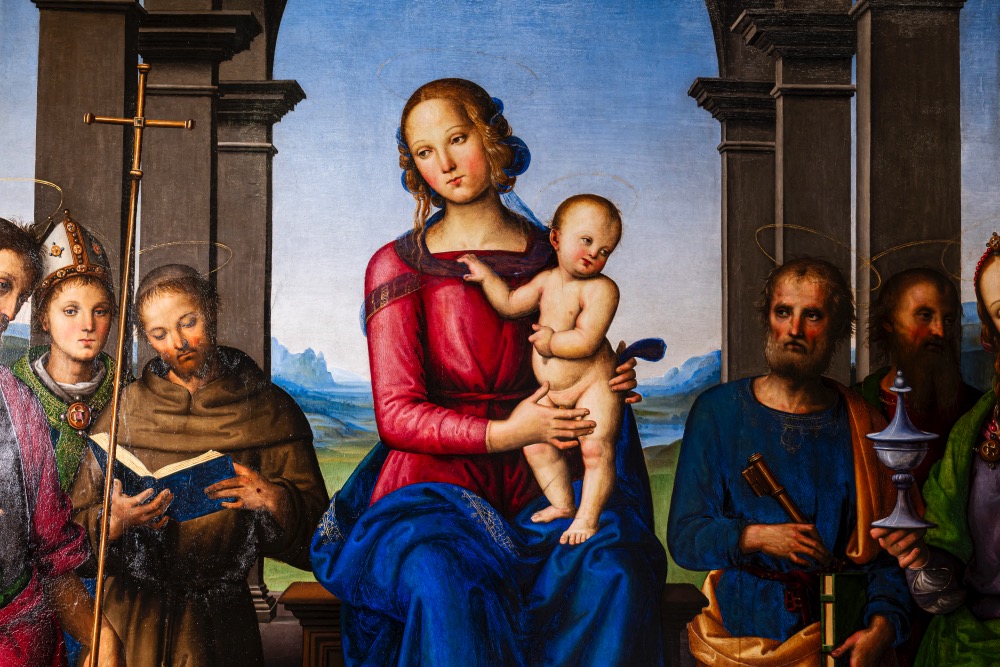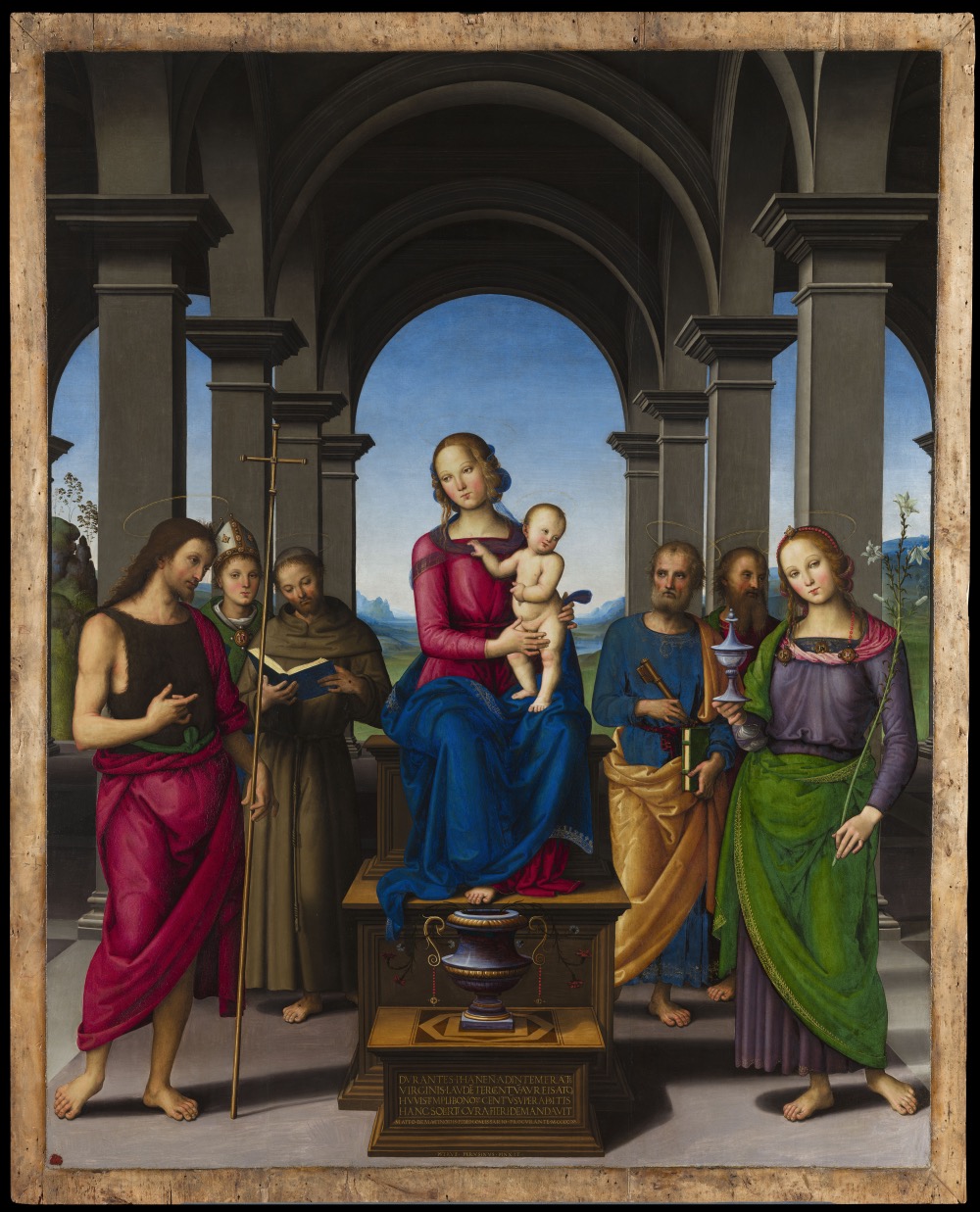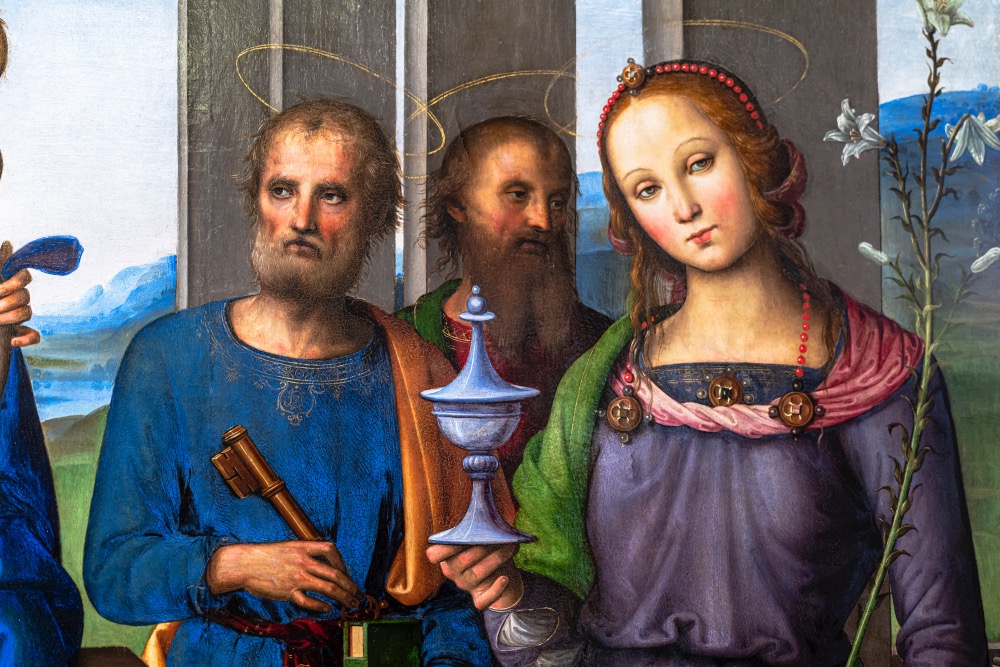
Have you ever had the privilege of admiring the Fano Altarpiece, a Renaissance masterpiece by Pietro Vannucci, known as Perugino? In this post, we will explore together the history and details of this extraordinary work, which is kept in the church of Santa Maria Nuova in Fano and has been temporarily relocated for security reasons to the Museo del Palazzo Malatestiano in Fano.
The eternal fascination of the Fano Altarpiece: Perugino’s masterpiece

Did you know that this Fano Altarpiece by Perugino is not only a work of art, but also tells a fascinating story about its creation and its journey through time?
GENESIS OF A MASTERPIECE
The Fano Altarpiece was commissioned in April 1488 to decorate the high altar of the church of Santa Maria Nuova, located in the district of San Lazzaro in Fano. This sacred place was the refuge of the Friars Minor Observant from 1480, after they moved from their previous home in Santa Maria al Metauro.
In 1517, with the move to the church of San Salvatore, in the centre of Fano, and the adoption of the new title of Santa Maria Nuova, all the works, including Perugino’s altarpiece, were transferred to the new location.
The work is distinguished by its composition: in the centre stands the Madonna and Child, surrounded by Saints John the Baptist, Louis of Toulouse, Francis, Peter, Paul and Mary Magdalene. The upper part, or cymatium, presents Christ in Pieta, while the base, or predella, narrates episodes from the life of the Virgin.
ANALYSIS OF PERUGINO’S FANO ALTARPIECE
The relationship of the Fano Altarpiece with other works by Perugino for the same church, such as the Annunciation, is interesting. The Fano Altarpiece was thus not Perugino’s only work for Santa Maria Nuova, with the Annunciation probably dating from a few years earlier.
However, the Fano Altarpiece stands out for its vertical format that enhances the painted architecture and the harmonious arrangement of the characters. The presence of minute details and the balanced composition suggest a possible collaboration between Perugino and his assistants.
The cymatium, painted almost a decade later, shows stylistic and chronological differences from the main altarpiece, reflecting Perugino’s Venetian influences and external commissions.
CURIOSITIES ABOUT PERUGINO’S FANO ALTARPIECE
One of the most intriguing aspects of the Fano Altarpiece is the possible participation of Raphael Sanzio, then a young pupil of Perugino. Many scholars believe that Raphael may have worked on parts of the work during his apprenticeship in Perugino’s workshop.
The cimasa of the work, made about a decade after the main altarpiece, shows Venetian stylistic influences, probably due to Perugino’s stays in Venice. This detail suggests the artist’s openness to different painting currents and techniques, knuckles demonstrating the continuous experimentation of a great master.
Perugino’s Fano Altarpiece has recently undergone careful restoration, which began with a series of diagnostic investigations in 2020 and officially started in 2021.
The restoration has allowed for a great recovery of the legibility of this work, in which the harmony of light and shadow, the chromatic balance, the depth of the imposing architecture, and the skilful rendering of the modelling can now be better appreciated. The intervention has also made it possible to deepen our understanding of the work, the materials and their stratification, the execution technique, even in its most hidden aspects, including the chains of the architecture of the central panel present in the preparatory drawing, later not realised, and a mountainous landscape with a city concealed beneath the figure of Joseph of Arimathea, added during the course of the work by the painter, probably for a more symmetrical composition that would tie in harmoniously with the perfectly harmonious and balanced composition of the altarpiece.
Originally located in the high altar of the church of Santa Maria Nuova, the altarpiece has been moved over the centuries. Such relocations were not uncommon for works of art of the time, often moved for reasons of conservation or liturgical adaptations.
Since the end of 2023, the work has been temporarily located in the Museum of the Malatesta Palace in Fano for security reasons.

Perugino’s Fano Altarpiece is not only an expression of Renaissance artistry, but also a testimony to the history and cultural evolution of an era. Every element, from the choice of saints to the architectural composition, speaks of a masterpiece that speaks a universal language, capable of conveying powerful and timeless messages.
Admiring it in Fano is not just a journey through art history, but an immersive experience in the beauty and spirituality of the Renaissance.

